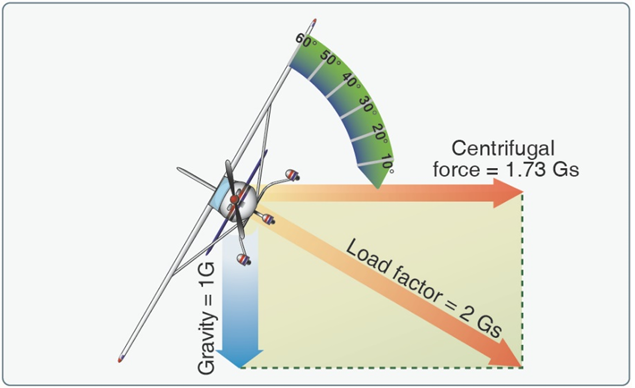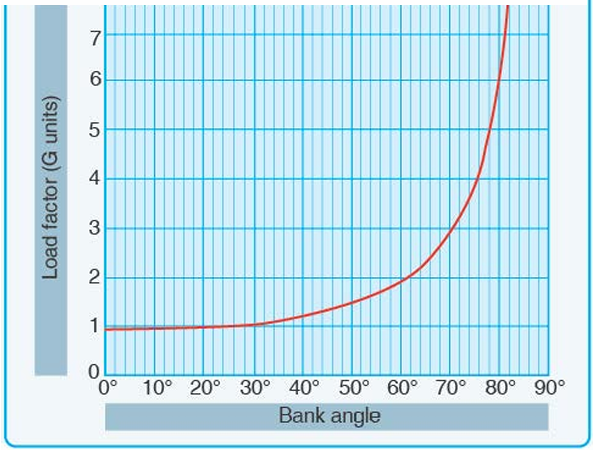Introduction
Before any flight, the remote pilot-in-command (PIC) should verify the aircraft is correctly loaded by determining the weight and balance condition of the aircraft. An aircraft’s weight and balance restrictions established by the manufacturer or the builder should be closely followed. Compliance with the manufacturer’s weight and balance limits is critical to flight safety. The remote PIC must consider the consequences of an overweight aircraft if an emergency condition arises.
- Although a maximum gross takeoff weight may be specified, the aircraft may not always safely take off with this load under all conditions. Conditions that affect takeoff and climb performance, such as high elevations, high air temperatures, and high humidity (high density altitudes) may require a reduction in weight before flight is attempted. Other factors to consider prior to takeoff are runway/launch area length, surface, slope, surface wind, and the presence of obstacles. These factors may require a reduction in weight prior to flight.
- Weight changes during flight also have a direct effect on aircraft performance. Fuel burn is the most common weight change that takes place during flight. As fuel is used, the aircraft becomes lighter and performance is improved, but this could have a negative effect on balance. In small UA operations, weight change during flight may occur when expendable items are used on board (e.g., a jettisonable load).
Adverse balance conditions (i.e., weight distribution) may affect flight characteristics in much the same manner as those mentioned for an excess weight condition. Limits for the location of the center of gravity (CG) may be established by the manufacturer. The CG is not a fixed point marked on the aircraft; its location depends on the distribution of aircraft weight. As variable load items are shifted or expended, there may be a resultant shift in CG location. The remote PIC should determine how the CG will shift and the resultant effects on the aircraft. If the CG is not within the allowable limits after loading or do not remain within the allowable limits for safe flight, it will be necessary to relocate or shed some weight before flight is attempted.
Weight
Gravity is the pulling force that tends to draw all bodies to the center of the earth. The CG may be considered as a point at which all the weight of the aircraft is concentrated. If the aircraft were supported at its exact CG, it would balance in any attitude. It will be noted that CG is of major importance in a small UA, for its position has a great bearing upon stability. The allowable location of the CG is determined by the general design of each particular aircraft. The designers determine how far the center of pressure (CP) will travel. It is important to understand that an aircraft’s weight is concentrated at the CG and the aerodynamic forces of lift occur at the CP. When the CG is forward of the CP, there is a natural tendency for the aircraft to want to pitch nose down. If the CP is forward of the CG, a nose up pitching moment is created. Therefore, designers fix the aft limit of the CG forward of the CP for the corresponding flight speed in order to retain flight equilibrium.
Weight has a definite relationship to lift. This relationship is simple, but important in understanding the aerodynamics of flying. Lift is the upward force on the wing acting perpendicular to the relative wind and perpendicular to the aircraft’s lateral axis. Lift is required to counteract the aircraft’s weight. In stabilized level flight, when the lift force is equal to the weight force, the aircraft is in a state of equilibrium and neither accelerates upward or downward. If lift becomes less than weight, the vertical speed will decrease. When lift is greater than weight, the vertical speed will increase.
Stability
Stability is the inherent quality of an aircraft to correct for conditions that may disturb its equilibrium and to return to or to continue on the original flight path. It is primarily an aircraft design characteristic.
Stability in an aircraft affects two areas significantly:
- Maneuverability—the quality of an aircraft that permits it to be maneuvered easily and to withstand the stresses imposed by maneuvers. It is governed by the aircraft’s weight, inertia, size and location of flight controls, structural strength, and powerplant. It too is an aircraft design characteristic.
- Controllability—the capability of an aircraft to respond to the pilot’s control, especially with regard to flight path and attitude. It is the quality of the aircraft’s response to the pilot’s control application when maneuvering the aircraft, regardless of its stability characteristics.
Load Factors
In aerodynamics, the maximum load factor (at given bank angle) is a proportion between lift and weight and has a trigonometric relationship. The load factor is measured in Gs (acceleration of gravity), a unit of force equal to the force exerted by gravity on a body at rest and indicates the force to which a body is subjected when it is accelerated. Any force applied to an aircraft to deflect its flight from a straight line produces a stress on its structure. The amount of this force is the load factor. While a course in aerodynamics is not a prerequisite for obtaining a remote pilot certificate, the competent pilot should have a solid understanding of the forces that act on the aircraft, the advantageous use of these forces, and the operating limitations of the aircraft being flown.
For example, a load factor of 3 means the total load on an aircraft’s structure is three times its weight. Since load factors are expressed in terms of Gs, a load factor of 3 may be spoken of as 3 Gs, or a load factor of 4 as 4 Gs.
With the structural design of aircraft planned to withstand only a certain amount of overload, a knowledge of load factors has become essential for all pilots. Load factors are important for two reasons:
1. It is possible for a pilot to impose a dangerous overload on the aircraft structures.
2. An increased load factor increases the stalling speed and makes stalls possible at seemingly safe flight speeds.
Load Factors in Steep Turns
At a constant altitude, during a coordinated turn in any aircraft, the load factor is the result of two forces: centrifugal force and weight. [Figure 4-1] For any given bank angle, the rate-of-turn varies with the airspeed—the higher the speed, the slower the rate-of-turn (ROT). This compensates for added centrifugal force, allowing the load factor to remain the same.
Figure 4-2 reveals an important fact about turns—the load factor increases at a terrific rate after a bank has reached 45° or 50°. The load factor for any aircraft in a coordinated level turn at 60° bank is 2 Gs. The load factor in an 80° bank is 5.76 Gs. The wing must produce lift equal to these load factors if altitude is to be maintained.
It should be noted how rapidly the line denoting load factor rises as it approaches the 90° bank line, which it never quite reaches because a 90° banked, constant altitude turn is not mathematically possible. An aircraft may be banked to 90° in a coordinated turn if not trying to hold altitude. An aircraft that can be held in a 90° banked slipping turn is capable of straight knife-edged flight. At slightly more than 80°, the load factor exceeds the limit of 6 Gs, the limit load factor of an acrobatic aircraft.
Load Factors and Stalling Speeds
Any aircraft, within the limits of its structure, may be stalled at any airspeed. When a sufficiently high AOA is imposed, the smooth flow of air over an airfoil breaks up and separates, producing an abrupt change of flight characteristics and a sudden loss of lift, which results in a stall.
A study of this effect has revealed that an aircraft’s stalling speed increases in proportion to the square root of the load factor. This means that an aircraft with a normal unaccelerated stalling speed of 50 knots can be stalled at 100 knots by inducing a load factor of 4 Gs. If it were possible for this aircraft to withstand a load factor of nine, it could be stalled at a speed of 150 knots. A pilot should be aware of the danger of inadvertently stalling the aircraft by increasing the load factor, as in a steep turn or spiral.

Figure 4-1. Two forces cause load factor during turns.

Figure 4-2. Angle of bank changes load factor in level flight.
Figures 4-2 and 4-3 show that banking an aircraft greater than 72° in a steep turn produces a load factor of 3, and the stalling speed is increased significantly. If this turn is made in an aircraft with a normal unaccelerated stalling speed of 45 knots, the airspeed must be kept greater than 75 knots to prevent inducing a stall. A similar effect is experienced in a quick pull up or any maneuver producing load factors above 1 G. This sudden, unexpected loss of control, particularly in a steep turn or abrupt application of the back elevator control near the ground, has caused many accidents.
Since the load factor is squared as the stalling speed doubles, tremendous loads may be imposed on structures by stalling an aircraft at relatively high airspeeds.
Figure 4-3. Load factor changes stall speed.
Weight and Balance
Compliance with the weight and balance limits of any aircraft is critical to flight safety. Operating above the maximum weight limitation compromises the structural integrity of an aircraft and adversely affects its performance. Operation with the center of gravity (CG) outside the approved limits results in control difficulty. The aircraft’s weight and balance data is important information for a pilot that must be frequently reevaluated.
Weight Control
Weight is the force with which gravity attracts a body toward the center of the Earth. It is a product of the mass of a body and the acceleration acting on the body. Weight is a major factor in aircraft construction and operation and demands respect from all pilots. The force of gravity continuously attempts to pull an aircraft down toward Earth. The force of lift is the only force that counteracts weight and sustains an aircraft in flight. The amount of lift produced by an airfoil is limited by the airfoil design, AOA, airspeed, and air density. To assure that the lift generated is sufficient to counteract weight, loading an aircraft beyond the manufacturer’s recommended weight must be avoided. If the weight is greater than the lift generated, the aircraft may be incapable of flight.
Effects of Weight
Any item aboard an aircraft that increases the total weight is undesirable for performance. Manufacturers attempt to make an aircraft as light as possible without sacrificing strength or safety.
The pilot should always be aware of the consequences of overloading. An overloaded aircraft may not be able to leave the ground, or if it does become airborne, it may exhibit unexpected and unusually poor flight characteristics. If not properly loaded, the initial indication of poor performance usually takes place during takeoff.
Excessive weight reduces the flight performance in almost every respect. For example, the most important performance deficiencies of an overloaded aircraft are:
• Higher takeoff speed
• Longer takeoff run
• Reduced rate and angle of climb
• Lower maximum altitude
• Shorter range
• Reduced cruising speed
• Reduced maneuverability
• Higher stalling speed
• Higher approach and landing speed
• Longer landing roll
The pilot must be knowledgeable about the effect of weight on the performance of the particular aircraft being flown. Excessive weight in itself reduces the safety margins available to the pilot and becomes even more hazardous when other performance-reducing factors are combined with excess weight. The pilot must also consider the consequences of an overweight aircraft if an emergency condition arises.





